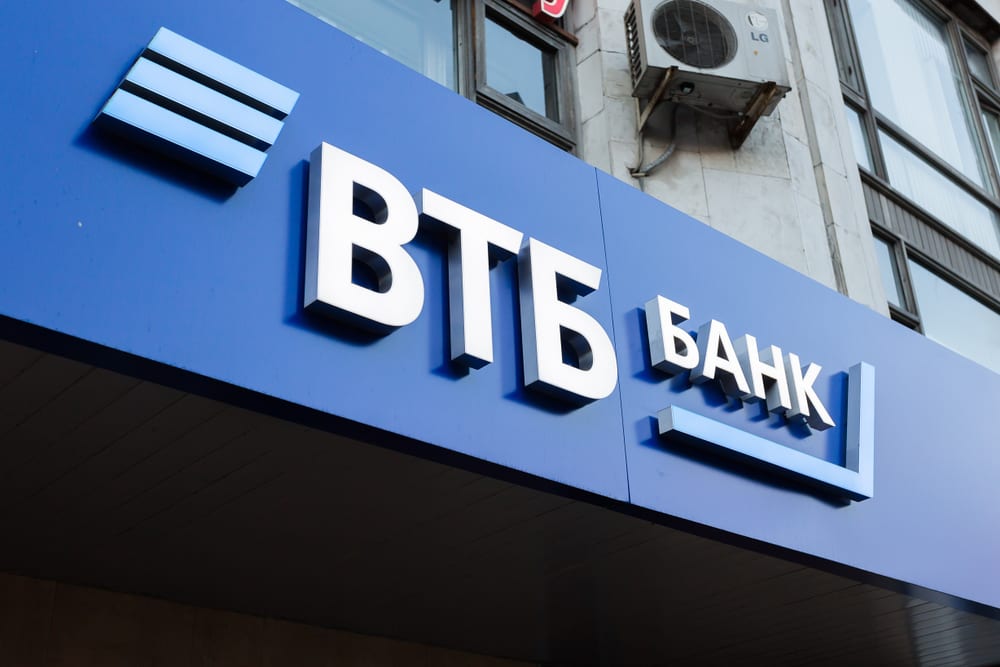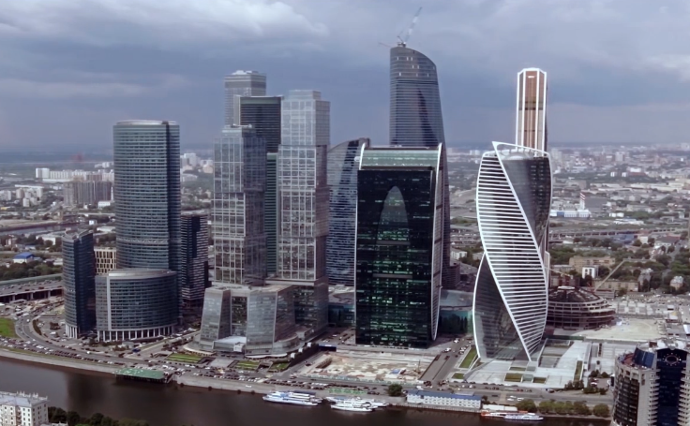VTB deputy chairman discloses exasperation over Yandex, Sber and Tinkoff competition
Russia’s banking landscape is dominated by just a small handful of players – with Sber, VTB, Gazprombank and Alfa Bank holding the largest monopolies.
Whilst you might think this paves the way for little competition and complacency, it in fact encourages quite the opposite. Despite owning roughly half of Sber’s assets and a fraction of Sber’s user base, VTB still presents a significant threat to Russia’s largest bank.

In 2020, VTB launched a total of 1,280 software development teams
The top two players are working overtime to maintain incremental gains on each other across a wealth of verticals which stretch far beyond customer numbers and assets.
Vadim Kulik, VTB’s deputy president and chairman of its bank management board, tells FinTech Futures about the incredibly competitive banking landscape in Russia.
He divulges details about the long weekends when rolling out new products, and how he struggles to keep pace with his “three nightmares – Yandex, Sber and Tinkoff”, as these fintechs transform their business offerings to provide customers with more e-commerce and retail products.
He reveals that “no bank can actually compete with that”, which is a sentiment that’s felt globally across the industry’s traditional banks.
With the advent of digital transformations across the global banking sphere, verticals, such as the number of app developments rolled out in a week, or the number of retail technology investments made in a year, are important points of comparison.
Talent nabbing
Kulik was recruited by VTB in 2019 to win back lost ground from VTB’s arch-rival, Sber – who also happens to be Kulik’s former employer.
“I ended up at VTB in a pretty peculiar way, because I left VTB for Sber [in 2008], but then I came back to VTB,” the bank’s deputy chairman explains.
Between 2004 and 2008, Kulik oversaw the creation of the bank’s retail arm, VTB 24, which was spun out of VTB’s acquisition of Guta Bank.
“At the time, VTB 24, in terms of retail technologies, outperformed Sber. [So] I was asked to move technologies forward because Sber didn’t want to lose its leading position.
“Now, I have a similar task at VTB – overtake Sber. Naturally, there are many things we are changing now.”
Robots, production and open APIs
When Kulik joined VTB in 2019, the bank sat on a heterogenous internal landscape, that was inherited as VTB grew through mergers. Its IT structure reflected the vestiges of several big banks.
Even today, VTB’s total number of IT systems exceeds 780, according to Kulik. “Often, our employees actually have to manually transfer information from one system to another. Sometimes it can be as bad as typing it in from one system to another.”
But the bank is changing this. One way is through its heavy investments in artificial intelligence (AI) and robotisation. “We are working on two stages of robotization,” says Kulik. “One is breeding robots; the second stage involves launching solutions on top of that.”
Currently, the bank has created 20 commercial robots. Whilst ten are live and in production, a further ten are still in the testing phase.
Production of new features at the bank has also “completely changed”, according to Kulik. Employees have turned to agile development, unbundling silos in favour of a more “synergistic” model.
In 2020, VTB launched a total of 1,280 software development teams. This allowed the bank to operate something akin to a “coding conveyor”, which meant – despite the pandemic – its employees have been able to update VTB’s systems every weekend.

“During the weekends, we’ve got to publish so much that actually 48 hours is not enough”
Last year, the bank launched VTB online for retail customers, which runs on micro-service architecture. Last month, the bank began publishing its open application programme interfaces (APIs).
These APIs allow any legal entity to plug into VTB’s banking services and use them like a white label solution to launch their quasi-bank service. “So, it would be Gucci powered by VTB,” Kulik explains.
“We’re horribly tired, all of us”
But the bank’s technology and methodology revamps have come at a price.
“We all did overwork massively,” says Kulik. “We’re horribly tired, all of us, right now.” The deputy chairman puts this down to the fact “the window of opportunity [to make gains] is short”.
“During the weekends, we’ve got to publish so much that actually 48 hours is not enough.” This weekend alone, some 800 people will be working “to make sure that whatever they recently developed gets rolled out into production.”
“We are fighting over customers pretty much every day or shall I say every hour,” Kulik adds.
“Sometimes competition is so fierce around who will be the first one to launch a new service. And it’s a matter of days, effectively.”
This competition is often over the number of minutes a user spends in a bank’s application per day. Because, as Kulik puts it, each minute of a client’s eyeballs that the bank attracts in a day helps it to increase sales.
In terms of investments, the bank’s digitalisation has increased its costs. “However, it’s not colossal,” Kulik assures. “And, fortunately, it’s such a far cry from how much Sber is spending.”
VTB’s net profit amounted to RUB 64.5 billion ($850 million) in the first ten months of 2020, down 56.3% compared to the same period in 2019. Whilst this is, in large part, down to the COVID-19 pandemic, the bank’s technology spends also likely had a part in the significant decline.
VTB’s open vs Sber’s closed ecosystem
Whilst VTB and Sber are often pitted against each other as the top banking rivals in Russia, their ecosystem approaches are practically opposite.
Sber, since Russian Big Tech Yandex rebuffed its acquisition bid back in 2018, has focused on making its platform everything to everyone. Last year, the bank acquired a 46.5% stake in Yandex-like rival online media group Rambler, and an 84.7% stake in Local Kitchen to rival Yandex’s food delivery service.
For Sber, the play is simple. Keep buying up your competitors until you have no more. But VTB is taking a different approach. Instead of cultivating a closed ecosystem, it’s opted for an open one.
“Sber’s ecosystem is bank-centric, with itself at the very centre,” explains Kulik. “All the other elements of the ecosystem are small entities, sitting on the periphery of Sber.” The deputy chairman likens it to “an administrative control pyramid”.
VTB’s philosophy, he continues, is different. “We actually have a bunch of companies we consider part of our ecosystem, and they tend to be large. They are actually as big – for their industries at least – as VTB.”

Kulik’s three nightmares are Yandex, Sber and Tinkoff
Some of the bank’s largest partners include Russian telco Rostelecom, with which it registered the company, Big Data Platform, last March. The two have since launched what they call the “first” universal geoplatform in Russia, which produces analysis of depersonalised data.
Designed to be non-banking specific, the geoplatform benefits another of VTB’s big partners Magnit – a major Russian retailer – which uses it to choose store locations.
With a partner over buy approach, the bank deliberately avoids an ecosystem built in a command and control manner, much like Sber’s.
VTB’s “three nightmares”
Kulik isn’t shy to admit that Sber is VTB’s “fist nightmare”. But the bank’s “second nightmare” is the digital challenger bank, Tinkoff.
“Particularly if Tinkoff were to merge with Yandex, that would present a challenge for us,” says the bank’s deputy chairman. Tinkoff and Yandex called off their $5.5 billion mega-merger back in October.
The talks, which first began just weeks after Yandex officially broke things off with Sber, stalled less than four weeks after the pair first announced their plans to merge.
“Even without a merger with Tinkoff,” says Kulik, “Yandex will create their own bank, and this bank will also grow fast, and I will have three nightmares – Yandex, Sber and Tinkoff!”
The VTB deputy chairman admits that Tinkoff has a lot of basic products catering to retail customers, “a good engine”, and “a very good mobile application”.
“Yandex obviously has the search engine,” he continues. “But there is also an ecosystem around Yandex, such as Yandex Market, Yandex Eats, Yandex Taxi – now called Yandex Go.”
As a result, the two coming together would conjoin a strong e-commerce ecosystem with an impressive set of banking offers.
“Together they can cover most of the needs of a regular customer,” says Kulik. “Obviously, no bank can actually compete with that.”











































